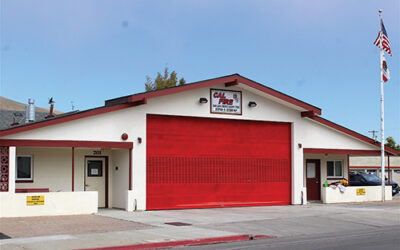Efforts for Los Osos to incorporate into a “city” hit a speed bump when the Community Services District unanimously voted against supporting the movement.
The Los Osos CSD Board was asked to support an effort by a citizen’s group to try and incorporate the town and get out from under the rule of the County Supervisors, but instead supported efforts to work closer with the local advisory council on lobbying Supervisors to get more or better services for the South Bay.
It wasn’t the first time that the town has looked into incorporating but the issue that stymied it before — primarily a lack of tax revenues — is still there, as while Los Osos pays a lot of property taxes, it lacks a the sizable retail sector for sales taxes, and motels that could collect transient occupancy taxes.
Former County Administrator, David Edge, told the CSD there would have to be a big producer of sales taxes, like a big box store built here, to bring in more sales taxes.
And while there is a new motel going up on 2nd Street in Baywood Park, and another motel there recently expanded, Los Osos’ motel room inventory is nowhere near, for example, Morro Bay’s roughly 930 rooms — with over 100 more either under construction now or already approved and not yet begun.
CSD General Manager, Ron Munds, told Estero Bay News, “The 4-0 decision not to support incorporation was purely financial.
“The outcome was for the CSD [me] to reach out to LOCAC and community groups to organize some sort of forum to discuss what the residents want and how best to get there. I’ve already been contacted by LOCAC [Los Osos Community Advisory Council] so we will have some initial talks on how to move forward.”
Munds’ staff report on the issue laid out the gist of the matter. “There are no legal barriers to municipal incorporation,” the report said, “but there are some practical revenue limitations to consider. In particular, one requirement in state code is ‘the proposed city is expected to receive revenues sufficient to provide public services and facilities and a reasonable reserve during the three fiscal years following incorporation.’”
And in 2011 the State took a big bite out of a big revenue source for cities — vehicle license fees. The loss was such that it’s prevented other towns from incorporating.
“The VLF revenue changes were so severe that no new incorporations have been approved since 2011. Overcoming this would require the community to raise additional tax revenue to meet the requirements. Based on average VLF revenue from already established cities, Los Osos would need to generate an estimated $1.7 million per year, or $118.04 per resident in new taxes to make up for the unavailable revenue.”
And of course, any new taxes a new city might want to levy would need to be approved by voters, just as choosing council and mayor officers and incorporation itself would be decided by voters.
But a new city doesn’t have to staff all the services citizens would demand — including police protection, firefighting and EMS services, planning and building, recreation, as well as water, sanitation and more.
The CSD already contracts with Cal Fire/County Fire and a city could contract with the Sheriff’s Department to patrol the new city, instead of forming a new police department.
Morro Bay has flirted with contracting fire services in the past as a cost saving measure, and even once had a proposal worked up by County Fire. But in the end, the residents didn’t want to lose the fire department nor the MBPD.
The City did, however, contract for emergency dispatching services with the Sheriff’s Office and Cal Fire, an arrangement that continues today.
Morro Bay also once briefly considered potentially “dis-incorporating” when the City’s budget was in the red.
But with unincorporated communities like Los Osos, it isn’t clear the value of the services the County does provide. “Prior to making an application,” the CSD report said, “the District could work with the County of San Luis Obispo to better understand the current level of service the County is providing to the community and the cost of those services. This could help establish a baseline of what costs a newly incorporated City would need to bear and more accurately estimate revenues. Partnering with the County to estimate this information promotes cooperation and reduces the risk of polarization or antagonism. Depending on what the District learns, the process could identify alternatives to incorporation.”
If the proposal had gotten support, it would have had to go through the Local Agency Formation Commission or LAFCo., a countywide agency that oversees annexations, incorporations and establishments of entities like a CSD, among other responsibilities, before going to the voters.
It would also have cost upwards of $200,000, which in the end was too much.
It should be noted that the last town to become a city in SLO County was Atascadero, which incorporated in 1979.


